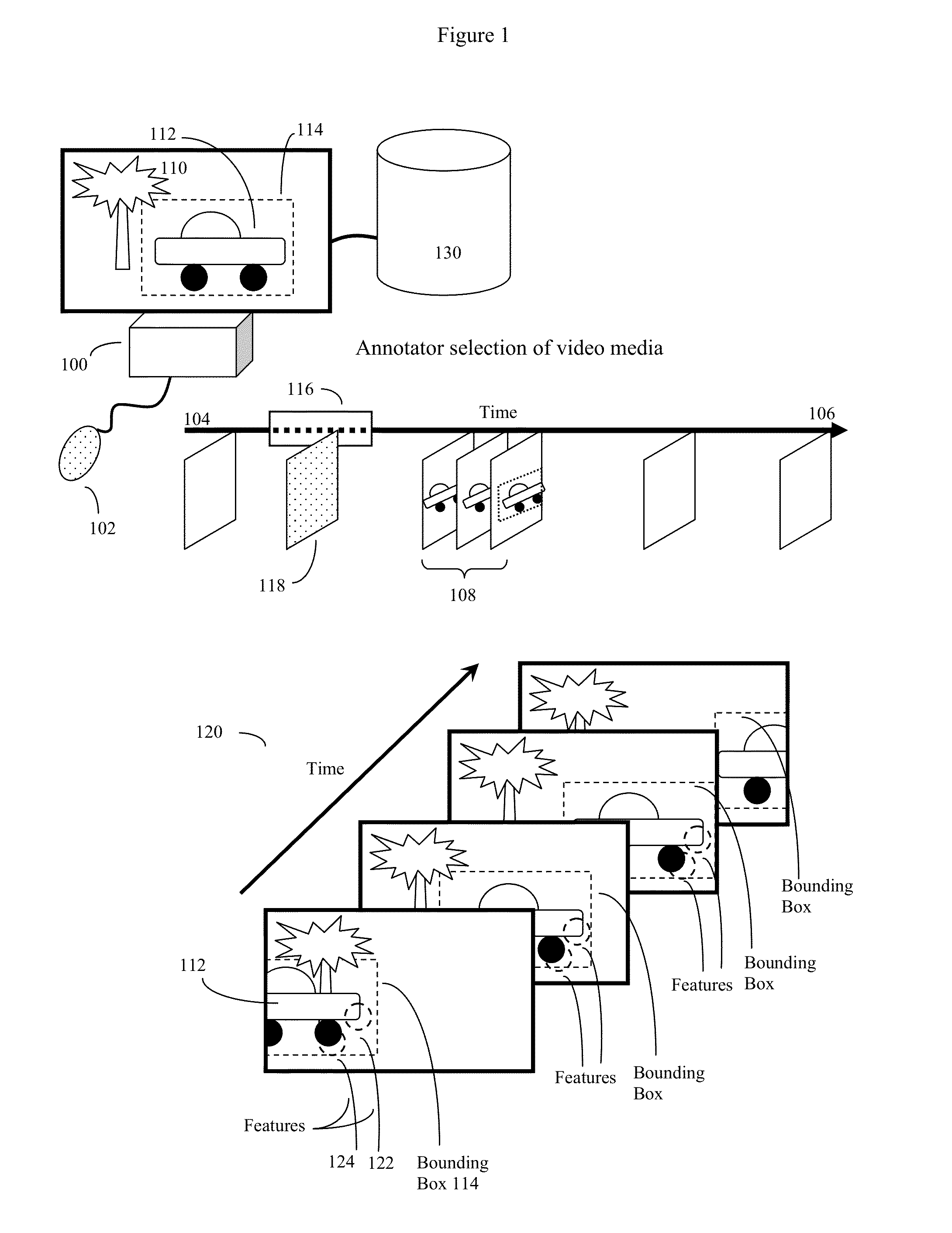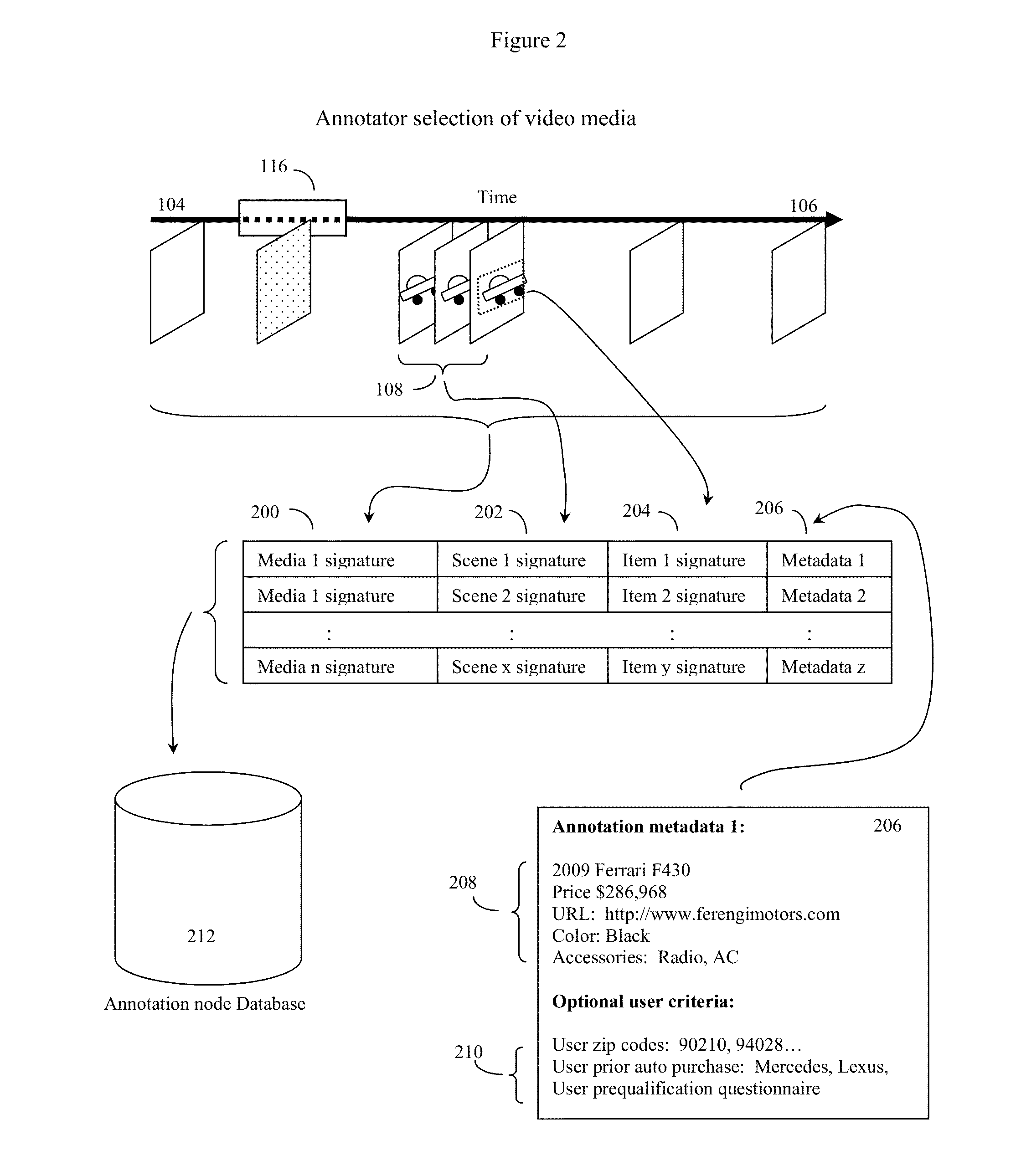Retrieving video annotation metadata using a p2p network and copyright free indexes
a video annotation and metadata technology, applied in the field of digital video information processing technology and p2p networks, can solve the problems of wasting user interest, unable to know the name of the manufacturer, the geographic position, and the viewer's geographic location, and achieve the effect of reducing the barrier
- Summary
- Abstract
- Description
- Claims
- Application Information
AI Technical Summary
Benefits of technology
Problems solved by technology
Method used
Image
Examples
examples
[0076]FIG. 1 shows an example of how an annotator of a video media may view the video media, produce a descriptor of the video media as a whole, select a specific scene and produce a descriptor of this specific scene, and finally select an item from specific portions of the video images of the specific scene of the video media, and produce an annotation item signature of this item. The annotator may additionally annotate this selected item or scene with various types of metadata.
[0077]Here the annotator (not shown) may play a video media on an annotator video device (100) and use a pointing device such as a mouse (102) or other device to select scenes and portions of interest in the video media. These scenes and portions of interest are shown in context in a series of video frames from the media as a whole, where (104) represents the beginning of the video media, (106) represents that end of the video media, and (108) represents a number of video frames from a scene of interest to t...
PUM
 Login to View More
Login to View More Abstract
Description
Claims
Application Information
 Login to View More
Login to View More - R&D
- Intellectual Property
- Life Sciences
- Materials
- Tech Scout
- Unparalleled Data Quality
- Higher Quality Content
- 60% Fewer Hallucinations
Browse by: Latest US Patents, China's latest patents, Technical Efficacy Thesaurus, Application Domain, Technology Topic, Popular Technical Reports.
© 2025 PatSnap. All rights reserved.Legal|Privacy policy|Modern Slavery Act Transparency Statement|Sitemap|About US| Contact US: help@patsnap.com



